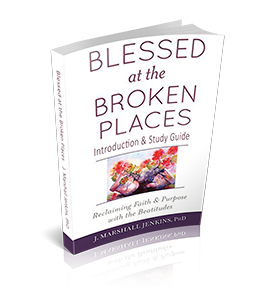
God’s way remains a foggy road, but with the examen, I take each step with new confidence.
Blessed are those who hunger and thirst for righteousness, for they will be filled (Matthew 5:6).
In my darkest hours, a passion emerged to know and do God’s will.
I thought I always wanted that quite enough. Neither was I guilty of a decadent or wayward lifestyle. In fact, I always had an overactive conscience.
However, I realized that for most of my life, I thought I knew God’s will without really listening to God. I prayed for guidance in discernment. God sent me to a 525 year-old tutor.
Recalling that St. Ignatius of Loyola developed a structured process for discerning God’s will, I took a class on discernment, read books by Ignatius and his contemporary disciples, and met regularly with an Ignatian spiritual director. As founder of the Society of Jesus (Jesuits), Ignatius strongly advocated education for the mind, but he attended just as much to the emotions and to developing ways to help people grow spiritually.
Ignatius believed God employs everything at our minds’ disposal for our help, so he promoted examining our daily experience to see what God tells us. Crucial to that examination, Ignatius taught a simple prayer called the examen. Now I end every day with it. Here is how I practice it:
- Open my heart. “I come before you in the light of your love,” I pray, and I allow myself as best I can to feel the warmth of that love.
- Intention: “Lead me, Lord, in reviewing this day, for every fruit of this prayer comes from you.”
- Gratitude: I search my memory for some of the day’s blessings and make my gratitude list .
- Recall at least one consolation. Moments of feeling closer to God or touched by God’s love Ignatius called, “consolations.” Remembering these in moments of decision or discovery, I savor the peace these moments bring, and let them teach something of God’s leading.
- Recall at least one desolation. Moments of feeling drawn away from God Ignatius called, “desolations.” Sometimes I can also recall how God brought me back home. Other times I realize my need to return to God, and confident in God’s forgiveness, I resolve to do so. Recalling these moments, too, teaches God’s leading.
- Dedication for the future. Based on the sense of God’s leading that this prayerful examination develops, I resolve to move with the Spirit in the day to come.[1]
This only takes 10-15 minutes or so at the close of the day. In time the examen prayer becomes less a step-by-step process and more a conversation to catch up on the day as one might with a spouse, parent, or friend.
It slowly shapes my consciousness, attuning my ears the morning after to God’s whisperings. God’s way remains a foggy road, but with the examen, I take each step with new confidence. That confidence in the fog is what I prayed for in the first place.
[1] To learn more about developing an examen prayer practice, I highly recommend:
- Timothy M. Gallagher, OMV, The Examen Prayer:
Ignatian
Wisdom for Our Lives Today
.
(New York: The Crossroad Publishing Company, 2006). - Dennis Linn, Sheila Fabricant Linn, and Matthew Linn, Sleeping with Bread: Holding What Gives You Life
.
(Mahwah, New York: Paulist Press, 1995.)

0 Comments